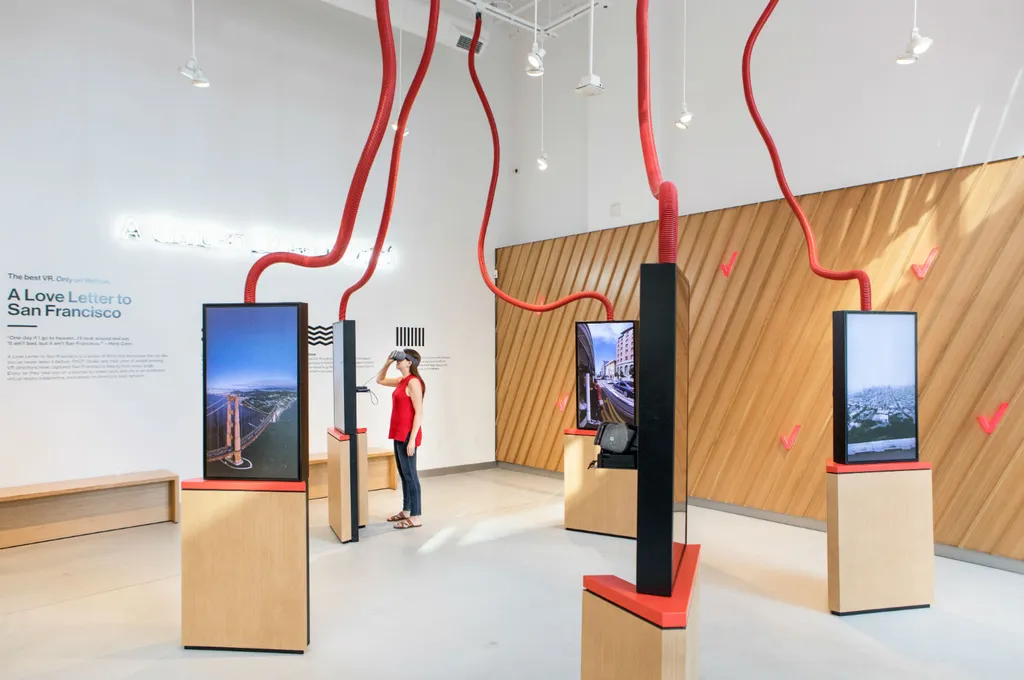Marketers, event planners and technologists of all walks have tried for many years to enhance real-life experiences with technology, to varying degrees of success. There have been QR codes, mobile-based scavenger hunts, check-in apps and more that failed to stick. From one experience to the next, brands want to stand out and create a lasting impression and emotional impact with more than free pens or flying discs.
And finally, we have the technology to address this missing piece of experiential marketing.

VR and 360 video can replace the inert swag bag and help consumers deeply engage with a brand. Whether a striking cinematic journey at a charity soiree, or a fun, branded experience at a retail store, VR/360 video in all its lifelikeness is the perfect digital complement to experiential marketing at live events.
Instead of routine gifts, we can now give consumers an experience within an experience, thoughtfully integrated for a huge emotional impact. Renault recently used VR to provide first-class airline guests with a look into the future. During the flight they were offered a VR headset that transported them to a virtual arrival terminal, where they were then given a brand new Renault Koleos to drive away in. When it was time to actually debark, passengers re-lived the experience in real life. Verizon intertwined virtual and actual reality with its A Love Letter to San Francisco installation at its SF flagship store. Patrons can soar through a 360-degree virtual tour of the places, people, and experiences that make the Golden Gate City unique and compelling. These immersive experiences give participants a thrilling memory and connection to brands — a memory that outweighs any free tote bag or nominal product discount.
An even more transportative experience was Budweiser’s 4D St. Louis brewery tour, which combined a visual VR experience with additional sensory elements, such as sounds, smells and weather, to mirror what brewery visitors would experience in real life. This sensory experience ultimately left people with a stronger connection to the virtual tour and the Budweiser brand. Technology has evolved to the point where people can enjoy a virtual experience and ascend into a different reality.
These advances in VR/360 have made it the perfect complement to experiential marketing. We now have an opportunity to add a level of emotional complexity and depth to our “experiences” — because what’s an experience that does not have an emotional component? But now that any marketing team can get its hands on a VR or 360 device, the differentiator will be quality in a world of quantity.
This means being authentic to your brand’s message and core will be increasingly important when engaging with customers through VR in an emotional way. For a brand with a focus on ethical procurement or fair trade practices, a VR experience allow consumers to step into the shoes of the human labor involved at every step of production. Lighter fare can be just as emotionally effective if it fits the brand; a snack brand could take us on a trip through our favorite childhood Saturday-morning cartoons, evoking a fun feeling of nostalgia. With VR and 360 experiences, visitors get a personal experience that can leave an indelible emotional impression in a way that would not be possible with posters or even a traditional promotional video.
Each experience will look different, but understanding human emotion and your brand’s unique connection to that emotion at these immersive events will be the key consideration. Do it right, and consumers will leave your experiential event with a fun memory and perhaps even an entirely new and lasting connection. VR and 360 has the potential to tap into intense and raw human emotions to form a better type of consumer relation. It’s the beginning of the breakdown of the barriers between humanity and technology. VR/360 has allowed us to transport ourselves to different places, times, or lifestyles but as we continue innovating, the new “swag bag effect” of experiential marketing lies in bringing human emotion, with thoughtfulness and relevance, to our experiences.
Zeda Stone is Creative Director, RYOT Lab. Zeda is charged with identifying emerging technologies and formats to utilize and enhance the already robust storytelling platforms that RYOT and AOL use. Prior to joining RYOT full time Zeda served as a technology consultant and with his company Captivate.me helped to build out RYOT’s early technology stack and giving platform. This is a guest post not produced by the UploadVR staff. No compensation was exchanged for the creation of this content.























